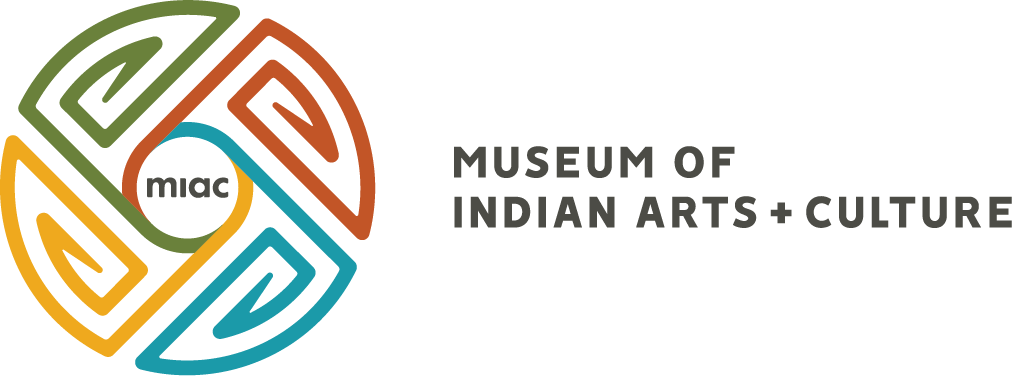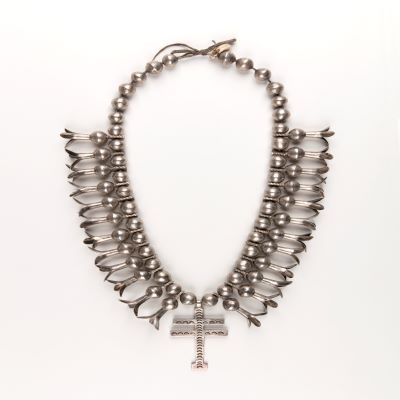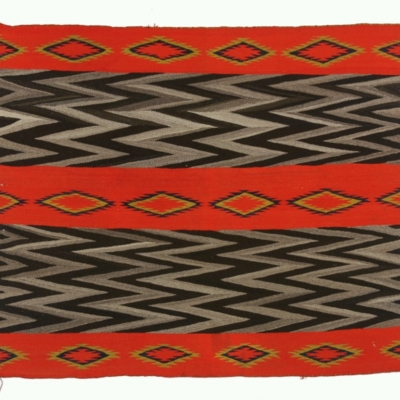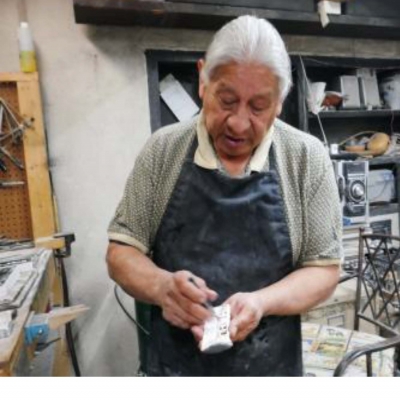Current Exhibitions
Woven Identities
November 20, 2011 through February 24, 2014
For the first time in over 30 years, the Museum of Indian Arts and Culture opens a major exhibition of North American Indian baskets on Sunday, November 20, 2011. The exhibition runs through February 23, 2014.
All objects tell a story, if you know the right questions to ask. At the time the baskets in this exhibition were collected little to no information was recorded; the weaver’s names are largely unknown. Nonetheless, each basket has an identity, a woven identity. The identity of each basket—where it was made; when it was made; who made it; who it was made for; why it was made—by “reading” its individual characteristics.
To read a basket five principal traits must be taken into account: material, construction, form and design, and utility. Woven Identities is divided into five sections representing these essential and diagnostic Native American basketry traits. If you ever wanted to learn the language of baskets, begin your journey with this exhibition.
On exhibit are baskets woven by artists representing 60 cultural groups, today referred to as tribes, bands, or pueblos. The weavers’ ancestral lands are in six culture areas of Western North America: The Southwest, Great Basin, Plateau, California, the Northwest Coast, and the Arctic.
Baskets can be functional. Burden baskets were for carrying. The improbable task of cooking was done in baskets—heated stones were added to food and liquid contents in meal preparation. Water was carried and clams collected in others. Baskets also served as hats (especially, but not exclusively, to the tourist trade).
Yet, function does not trump beauty. Basket making techniques are inherently attractive. Among the baskets on view are examples of false embroidery, cross weave, plaiting, and coiling. Materials like wrapped twine, corn husk, roots, rhizomes, stems, branches, leaves, grass, and cedar bark add their own good looks.
Of the 241 baskets in the exhibition, only 45 have been attributed to individual artists. Woven Identities honors those weavers and the many others whose names we do not yet know.
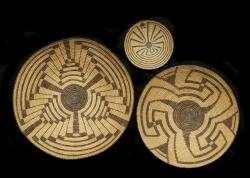
Bowl and Two Trays
Left to right: Bowl, c. 1900 Akimel O’odham, artist unknown Construction: coiling Foundation: cattail-splint bundle Weaving elements: willow shoots, devil’s claw seedpod Ada Crawford McCormack Collection, 31083 Tray, c. 1900 Akimel O’odham, artist unknown Construction: coiling Foundation: cattail-splint bundle Weaving elements: willow shoots, devil’s claw seedpod Ada Crawford McCormack Collection, 31091 Tray, c. 1900 Akimel O’odham, artist unknown Construction: coiling Foundation: cattail-splint bundle Weaving elements: willow shoots, devil’s claw seedpod Michael Harrison Collection, 1029
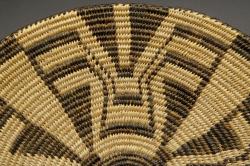
Tray
Tray, c. 1920 Akimel O’odham, c. 1920 Construction: coiling Foundation: cattail bundle Weaving elements: willow, devil’s claw seedpod Museum collection, 36720

Miniature Carrying Basket
CYLINDER, c. 1900 Tlingit Artist known as Mary Gift of Alice G. Brock, 1901 CONSTRUCTION: plain and three-strand twining, false embroidery FOUNDATION: spruce root WEAVING ELEMENTS: spruce root, phragmites; with dye
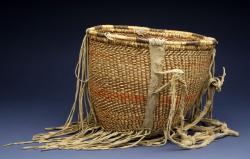
Carrying Basket
Carrying basket, c. 1925 San Carlos Apache, artist unknown Construction: plain, diagonal, and three-strand twining Foundation: cottonwood rods Weaving elements: willow shoots, devil’s claw seedpod; with red paint, buckskin, wire Museum purchase, 1115
